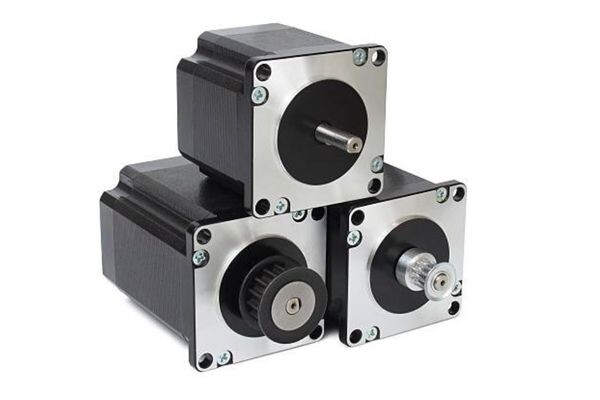Stepper motors are electric motors that convert electrical energy into precise and controlled mechanical motion. They provide high precision in terms of positioning and speed control thanks to their ability to move step by step. They are generally used in applications such as printers, CNC machines, robotic arms and 3D printers.
Stepper motors allow a rotating rotor to move at certain angles using permanent magnets or electromagnets. These angles are called "steps". The motor can stop at a certain step, rotate at a certain angle, or rotate continuously at a constant speed.
Stator: The part that is stationary and produces a magnetic field.
Rotor: The rotating part is usually geared or has a magnet.
Windings: The coils on the stator that create a magnetic field when current is passed through.
Driver Circuit: It provides control of the movement by sending a signal to the motor in the appropriate manner.
Stepper motors are usually NEMA (National Electrical Manufacturers Association) standards. These standards specify the mounting dimensions of the motor. Common types:
NEMA 17 Stepper Motor:
Usually used in 3D printers, small CNC machines and robotic projects.
Dimensions: 42 x 42 mm (flange size).
NEMA 23 Stepper Motor:
Ideal for applications requiring higher torque.
Commonly used in CNC machines, laser cutting devices and automation systems used.
Dimensions: 57 x 57 mm (flange size).
NEMA 34 Stepper Motor:
Used in industrial applications requiring high torque.
Generally preferred in large CNC machines and heavy load carrying systems.
Dimensions: 86 x 86 mm (flange size).
3D printers and CNC machines
Printers and scanners
Robotic applications
Automation systems
Camera lenses
Medical devices
High precision and repeatability
Easy position control
Reliable in applications that do not require closed-loop control work
Vibration may occur at low speeds.
Lower efficiency than DC motors.
Torque values are generally limited.
Stepper motors provide great advantages in applications requiring precise motion control. They can be used effectively in various projects thanks to their different types. In this article, we have examined in detail how stepper motors work, their types and advantages. It is important to understand the basic principles to choose the right motor.
